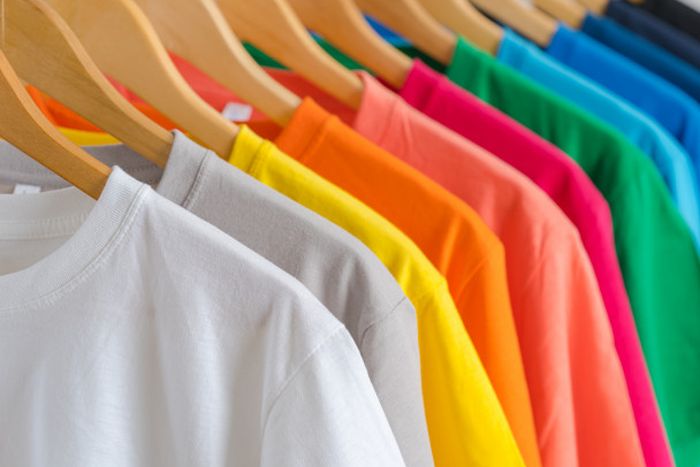
With innovations in technology and quarantine procedure in-place, home-based businesses are becoming all the rage. As work-life balance climbs our list of priorities, the incentives of remote work, including the ability to make money while still spending time with your children and spouse, have motivated thousands to become their own boss.
Custom T-shirt printing is one of the at-home businesses gaining rapid popularity. With a stack of women’s plain t-shirts in hand, you can quickly print a variety of custom designs and post them on eCommerce marketplaces and even your social media platforms. Before you develop your marketing strategy and set-up shipping regulations, here’s what you’ll need to get started.
Graphic design software
Some business owners have adopted printing techniques for their collection of t-shirts that venture outside the norm, but relying on graphic design software is the most tried-and-true method available for aspiring t-shirt printers. Graphic design software can be used to source all kinds of images from the internet which can be transformed into usable, printable images. The software is stocked with thousands of images to use and tools to modify the images you select.
Overall, this method is guaranteed to produce the most professional-looking shirts. Whether you’re hosting a business retreat or assembling a team of volunteers, you should consider purchasing graphic design software that can sharpen and enhance your images. Just make sure you have a good computer, since graphic design software like the Adobe Creative Cloud requires a powerful laptop.
If you’re an old-school print artist
If you like to create art using more traditional printing means, you can either paint a design directly on the surface shirt to create a one-of-a-kind item, or you can create an intaglio print block from wood or linoleum and press the print block onto the shirt’s surface with a T-shirt press machine.
Simple, traceable patterns can be made into shirt transfers or transfers onto print block materials. Unfortunately, this method takes a significant amount of time to execute. If you have a client that wants an original that can’t and won’t be reproduced, shirt transfers can help you fulfill this customer’s request.
Blank t-shirts
Printing images on t-shirts will require an ample supply of clean, blank shirts in a variety of colors of your choice. As the designer, you should be mindful of the color scheme of your logos and designs. Without thoughtful attention to how the color of your shirt will pair with the colors in your design, part of the graphics may not be visible, or the color of the shirt may clash with the color scheme of the printed graphics.
As a t-shirt printer, you’ll want the design, logo, or print to be clearly seen and/or read by passersby. As much fun as it might be to put images on tie-dye or batik shirts, try to avoid these backgrounds unless the images are amplified by a vibrantly-colored/patterned shirt.
Make sure you have several different sizes on-hand to accommodate customers in a wide range of sizes, from extra small to 4XL. Start by stocking five of each size in each t-shirt color you’d like to offer your customers.
If a supply of five shirts per color and size is too financially overwhelming, choose the top five favorite colors of your customer base and buy enough shirts in enough sizes to cover your startup production. If you haven’t received insight into your target market’s favorite colors, green, black, white, and blue or purple shirts are often in popular demand. It doesn’t hurt to have pink shirts on-hand, too, for your customers who look for a feminine touch in their apparel.
Printer
There are a few different ways to utilize your printer-of-choice. A printer can create a reverse image on heat transfer paper, or you can buy an extra-special printer that prints directly onto fabric. The latter is quite expensive, so you may want to start with the former and build up your t-shirt printing business before you invest in more expensive technology and printing methods. You can also start with an alternative, which is a direct-to-film Prestige DTF printer, that can elevate your garment printing pipeline for optimal efficiency, performance, and quality.
As the t-shirt printing industry evolves, vinyl printers have appeared on-the-market. These printers imprint an image on vinyl that is then heat-transferred to a shirt. This type of printing has gained notable popularity because it grants you the freedom to print multiple shirts with the same vinyl or different vinyl color.
Metallic Gold and Metallic Hot Pink are two vinyl colors that have piqued the interest of a variety of demographics. To appeal to your audience, you’ll want to add this to your supply list, to your online store, and/or to any physical sales locations.
Ink
Regardless of what type or method of t-shirt printing you choose, you won’t be able to produce a single clothing item without ink. Be sure to buy a large supply of ink or ink cartridges. You don’t want to run out of ink right in the middle of printing or design or transferring the design to the fabric’s surface. If you fail to refill the ink cartridge, you risk wasting a perfectly-good t-shirt that could have generated profit.
To avoid situations like these, pay close attention to ink levels on your printer so that you can quickly replace ink cartridges with depleted ink levels before you accidentally create a flawed or faded product.
Luckily, buying ink in mass quantities isn’t difficult. Most business supply and craft supply stores carry bulk ink products. You may or may not be able to find the bulk ink in stores. However, a business owner always has the option of ordering these ink cartridges in-store or online and having it shipped to the location nearest you at no cost. Once your ink has arrived, the store employees will notify you via email or phone call. After a representative has contacted you, you’ll be able to pick-up your ink products curbside, upon request
Selling Your T-shirts
Once everything is ready you should start selling the T-shirts. However, one of the key points to start a print-on-demand business is making sure that you follow all the required steps such as determining the costs, sustainability, fast dropshipping, etc. The cost of supplies, your time, your startup costs, etc., must be factored into a t-shirt’s cost to the consumer. While your goal should never be to breakeven, you don’t want to price a shirt in such a way that it doesn’t sell. Setting a reasonable price can be tricky. In determining your price, you’ll want to account for the cost per shirt and tack on a small dollar amount as compensation for your time. As your business picks up speed, you can increase prices to make-up for initial cost losses. Here’s a great step by step tutorial you can go through on how to start an online boutique business from ground up.








